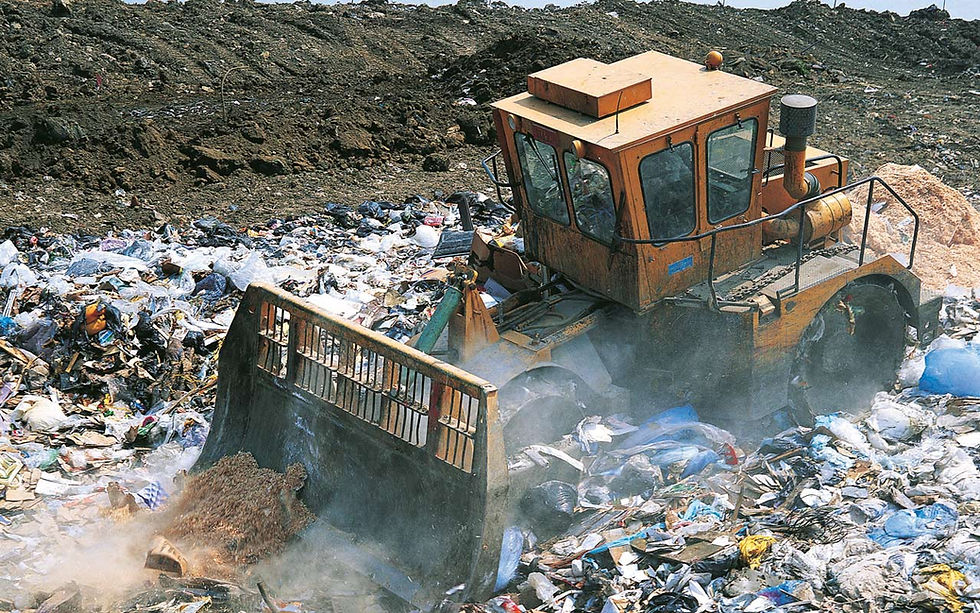Hygiene and Sanitation in Flooded Regions: What Are the Key Practices to Prioritize?
- Dec 13, 2024
- 4 min read
Floods are powerful natural disasters that can severely impact communities. While the immediate dangers often include injury and loss of life, floods can also spark long-term public health concerns, especially regarding hygiene and sanitation. When water levels rise and drown homes, businesses, and infrastructure, the risk of waterborne diseases skyrockets. Therefore, effective hygiene and sanitation practices are critical for the well-being of those affected by floods.
Understanding the Risks of Flooding
Flooding introduces numerous health risks, primarily due to the contamination of water sources and the interruption of sanitation services. When floodwaters mingle with sewage and hazardous materials, they can release harmful germs into local environments. According to the World Health Organization, approximately 2.4 billion people are exposed to unsafe drinking water, which significantly increases in flooded areas, causing diseases like cholera, typhoid fever, hepatitis A, and leptospirosis.
Additionally, stagnant water can become a breeding ground for mosquitoes, increasing the risk of vector-borne diseases like dengue fever and the Zika virus. Understanding these risks helps communities in implementing effective hygiene and sanitation measures during and after flooding.

Immediate Response Measures
1. Assessing the Water Quality
One of the first actions in managing hygiene following a flood is to assess the water supply's quality. Contaminated drinking water sources make it essential for authorities to identify safe water options. Regular water quality testing should occur, and communities should have access to bottled or treated water. For example, organizations like the Red Cross often set up water purification systems in affected regions to provide immediate relief.
2. Safe Disposal of Waste
In flooded areas, traditional waste disposal methods often fail. Educating residents on safe waste disposal is vital to prevent further contamination. Communities can utilize covered and elevated latrines to lessen contact with floodwaters or rely on sanitation kits provided by aid agencies. For instance, after the 2010 Pakistan floods, simple waste disposal methods provided by NGOs significantly reduced the spread of diseases.

3. Emergency Sanitation Facilities
Establishing emergency sanitation facilities in affected regions can help manage increased waste and prevent contamination. Temporary latrines should be set up at least 30 meters away from water sources and need regular maintenance to ensure hygiene.
Community Education and Awareness
4. Promoting Health Education
Effective education is crucial in managing hygiene and sanitation during floods. Communities must be alerted to the health risks linked to flooding and the importance of hygiene practices. Educational campaigns should cover topics like handwashing, safe food preparation, and the dangers of untreated water. For reference, a health campaign in Nepal during the 2015 earthquake effectively reduced disease cases by 30% through consistent health education.
5. Proper Hand Hygiene
Hand hygiene is essential for preventing disease transmission, especially in flooded areas. Encouraging frequent handwashing with soap and clean water can significantly cut the spread of harmful germs. In situations with limited water access, using alcohol-based hand sanitizers can be an effective alternative. A study found that handwashing reduced respiratory infections by about 16%, showcasing the importance of this practice.

Safe Food Handling Practices
6. Ensuring Food Safety
Floods can cause food shortages, and stored food supplies often become contaminated. It is vital to educate communities about food safety, like using clean water for cooking and washing food. Food exposed to floodwaters should be discarded to avoid illness. For example, after the 2021 floods in Germany, local health officials recommended that up to 80% of food products in inundated areas be thrown away to prevent foodborne illnesses.
7. Cooking and Eating Safely
Promoting the thorough cooking of food and avoiding raw dishes can greatly reduce health risks. Community cooking facilities can be established to ensure that food is prepared and served safely, especially in displacement camps.

Long-term Sanitation Solutions
8. Restoring Infrastructure
Once floodwaters recede, restoring sanitation infrastructure becomes immediate and essential. This includes repairing damaged sewage systems and ensuring that waste management services resume. A well-maintained sewage system is crucial for preventing future public health crises, as highlighted by studies that show up to a 50% reduction in disease outbreaks following infrastructure restoration efforts.

9. Improving Drainage Systems
Investing in improved drainage systems can significantly minimize the risk of future flooding. Enhanced drainage helps reduce standing water in post-flood conditions, thereby lowering the risk of both waterborne and mosquito-borne diseases.
Community Involvement
10. Engaging Local Residents
Involving local residents in planning and implementing hygiene and sanitation initiatives leads to more effective solutions. Community members provide valuable insights into local needs and preferences, allowing for tailored programs that address specific challenges faced during flooding events.
11. Training Local Volunteers
Training local volunteers to assist in hygiene promotion and sanitation enhances community resilience. These volunteers can serve as peer educators, sharing information and best practices, which builds community capacity to respond to future flooding events.

Final Thoughts
Flooding poses significant threats to hygiene and sanitation, potentially leading to serious public health crises. However, prioritizing best practices for hygiene and sanitation is essential in mitigating these health risks. Effective measures include assessing water quality, implementing safe waste disposal, promoting health education, and ensuring food safety. Engaging local communities in these efforts fosters resilience and creates lasting improvements in public health.
Combining immediate actions with long-term strategies is vital to establishing a safe and healthy environment after floods. By following the best practices highlighted, communities can protect themselves and drive their recovery efforts.
Flooded areas require immediate health and sanitation interventions.




Comments